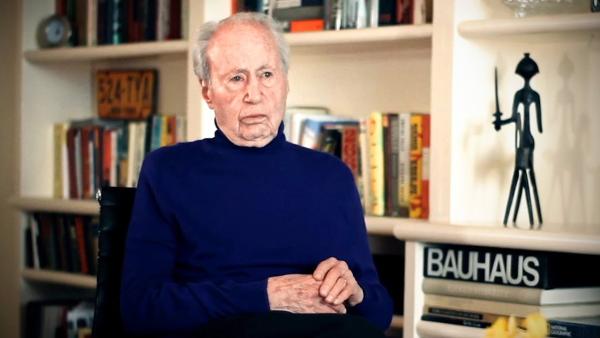
Recognition
2013 AIGA Medal
Born
January 4, 1925, Sewickley, Pennsylvania
Deceased
June 4, 2020, New York, New York
By Julie Lasky
September 3, 2012
Influential author and design advocate, Ralph Caplan is recognized for turning his discerning eye, deftness with words and wonderful sense of humor toward defining design over half a century through writing, editing and teaching.
Imagine that Patti LaBelle has just been inducted into the Rock and Roll Hall of Fame and it’s your job to belt out a little song in celebration. That’s how it feels to write about Ralph Caplan and his AIGA Medal.
It feels so humbling you reach for another writer’s words to cover up your inadequacy. Unfortunately, the writer who best expresses what you want to say, and how—with plainspoken good sense and with wit as playful and incisive as puppy teeth—is Caplan himself.
Consider this example, from his 1982 book By Design: Why There Are No Locks on the Bathroom Doors in the Hotel Louis XIV and Other Object Lessons:
A chair is the first thing you need when you don’t really need anything, and is therefore a peculiarly compelling symbol of civilization. For it is civilization, not survival, that requires design.
If you’re a writer who specializes in design (which is unlikely because the tribe has very few members, although their number is growing), Ralph Caplan is your model. If you’re lucky enough to study with him at the School of Visual Arts, where he teaches in the Design Criticism MFA program, he may even be your mentor.
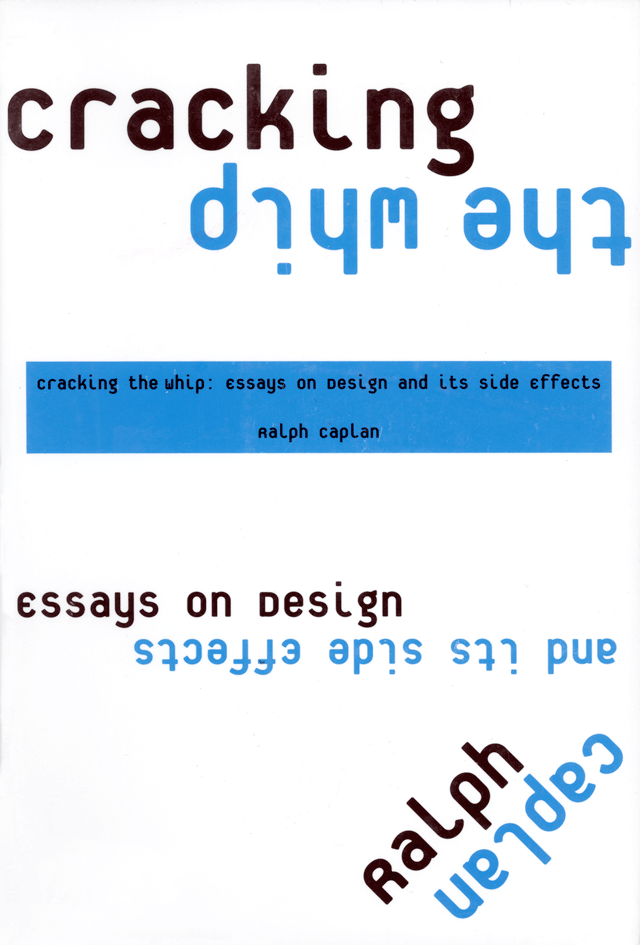
"Cracking the Whip: Essays on Design and Its Side Effects," 2006. Cover design: Adam Bohannon; Photo: Lee Iley.
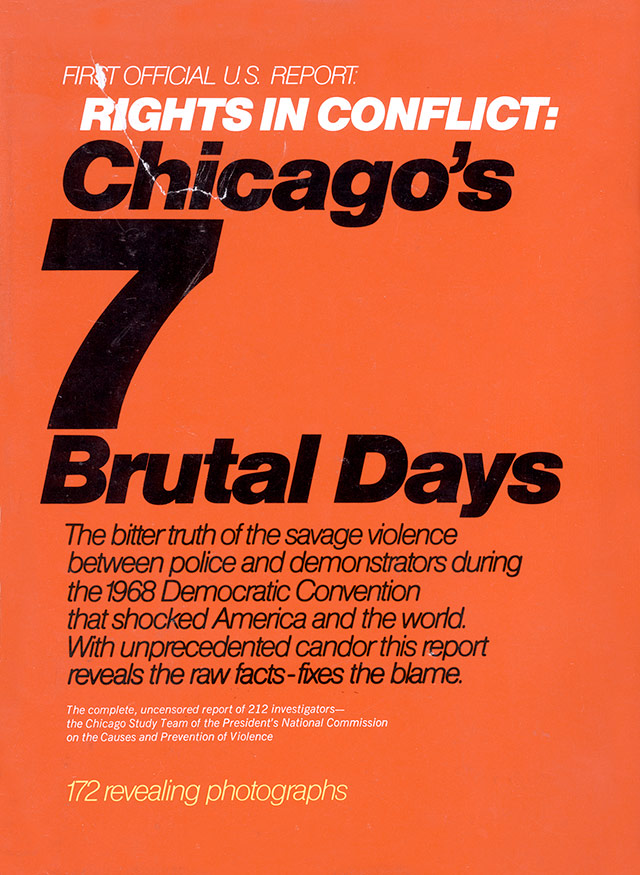
"Rights in Conflict: Chicago's 7 Brutal Days." Editorial Director: Ralph Caplan.
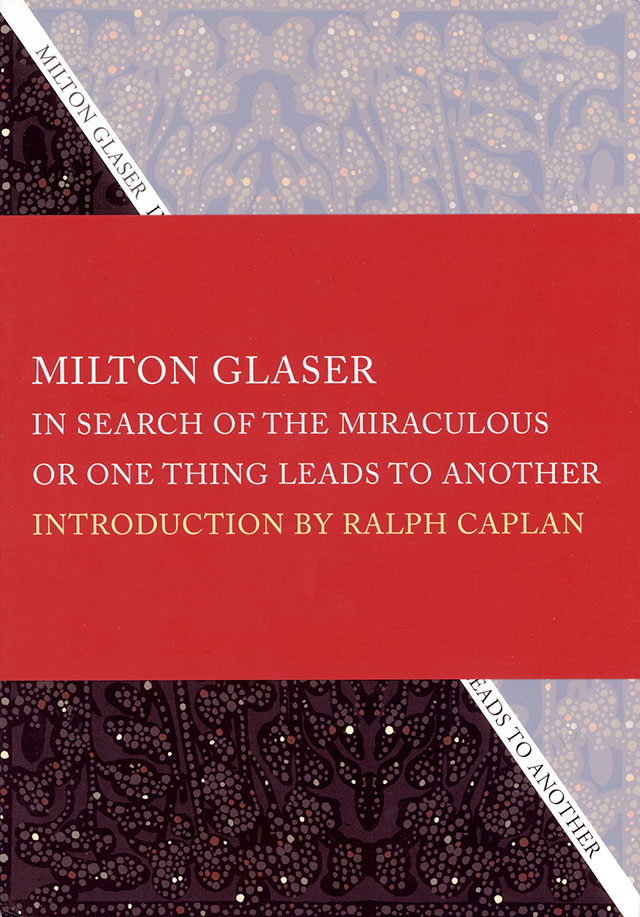
"The Search for the Miraculous or One Thing Leads to Another" by Milton Glaser with introduction by Ralph Caplan.
I can say with confidence, however, that you will never match him. Design has always resisted definition, but was never so open as it was in the postwar era when Caplan began to give it contours. In books and essays ever since, he has explained what design is:
A process for making things right
An instrument for making distinctions
If it were a religious denomination, Design would be Unitarianism.
He has also declared that:
Thinking about design is hard, but not thinking about it can be disastrous.
‘Attention must be paid’ is the cardinal rule of design discipline, for the designer is above all someone who pays attention to the situation at hand.
Designers shouldn’t design for museums any more than mummies should die for them.
There are many reasons why the practice of design has changed in the past five decades. I would argue that Ralph Caplan is one of them. His formulations have not only helped designers make persuasive cases to clients and explain their jobs to their own mothers; they have also brought consciousness and conscience to the discipline. As a result of this sui generis enterprise, design writing can never be the same. If Caplan didn’t say it first, he said it early, and he has pretty much said it all.
Here, for instance, is what he wrote about design thinking 30 years ago, long before that phrase started tumbling from designers’ lips:
…no industrial designer worth his salt, or our attention, has been trained to work exclusively on any particular product, unless by accident. What he has been trained to do is practice a process called design, a process that includes esthetic choices but does not consist only of them.
Here’s his take on branding at its worst, though no one called it branding at the time:
We are … the un-proud non-possessors of objects whose chief substance is that of the transient symbol. Our Puritan fear of the love of things turns out to have been groundless after all, for we do not love things or even possess them: they pass through our lives as barium passes through the digestive tract, unassimilated, their function merely to flash signals along the way.
Caplan’s insights have been sharpened by the fact that he came to design from the outside. He was born in 1925 and grew up in Ambridge, Pennsylvania, near Pittsburgh. His father owned a butcher shop, and later a wholesale grocery business; his mother worked as a bookkeeper. Ambridge, Caplan points out, sounds elite (it’s just a consonant shy of Cambridge), but it was a steelmaking town that was named after its main employer, American Bridge. “There was so much soot in the air that there were no white shirts in town,” he recalls. Referring to the rusting industrial landscape of his youth, he once wrote, “Richard Serra’s sculpture makes me homesick.”
A distractible student, he was suspended from high school at 16 after his teachers discovered that he had been collaborating in a school play—and claiming he had to skip class to rehearse it—though he wasn’t a cast or crew member. He maintained the charade of attending school each day, but instead hitchhiked the 18 miles to Pittsburgh to train, briefly but unsuccessfully, as a boxer. His parents eventually caught on and threatened to send him to a military academy. After perusing lavishly printed brochures showing uniformed cadets attending dances, he was only too happy to go. His parents compromised on a nonmilitary school with an ROTC program.
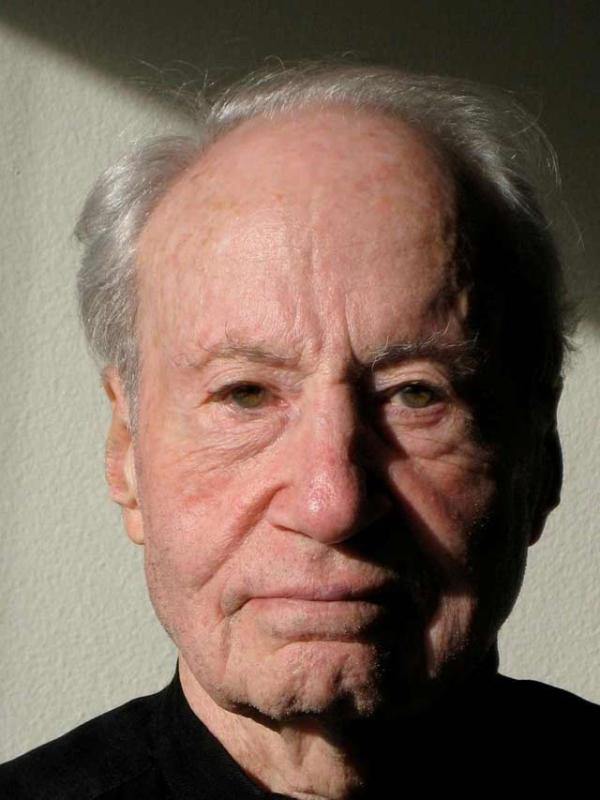
Ralph Caplan. Photo: Judith Ramquist.
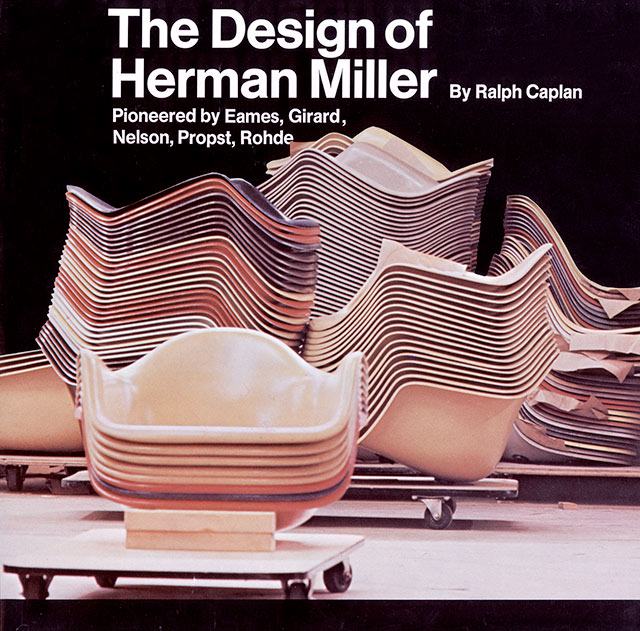
"The Design of Herman Miller," 1976. Photo: Lee Iley.
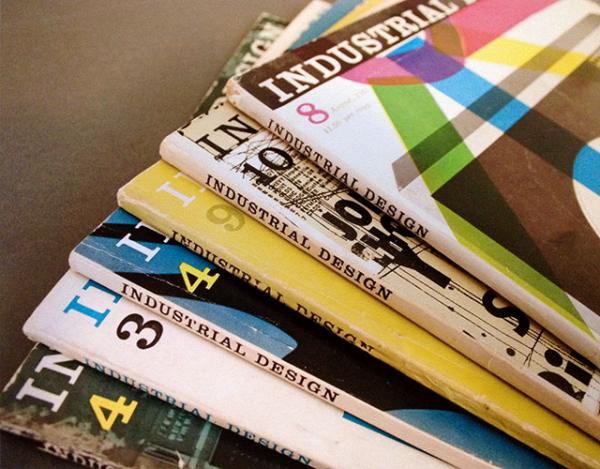
Assorted "I.D." magazines published while Ralph Caplan was editor-in-chief.
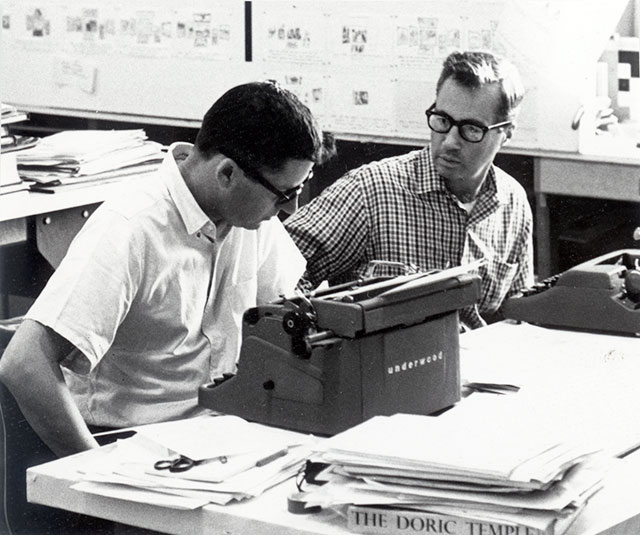
Glen Fleck (left), of the Eames Office, and Ralph Caplan (right) creating a puppet show for IBM circa 1960.
If design is intention—another definition that crops up in his writings—then Caplan’s career has been governed by happenstance. By his own account, he floated like milkweed from Earlham College (early 1940s) to a Marine Corps entertainment troupe in the South Pacific (World War II) to graduate study with the eminent poet John Crowe Ransom at Indiana University (Caplan’s master’s thesis, completed in 1950, was a book of poetry) to an academic career teaching English literature at a liberal arts college in Indiana (early 1950s) to the editing staff of a short-lived New York humor magazine (late 1950s) to the eventual helm of another New York magazine called Industrial Design, which he left in 1963 in order to write a novel, Say Yes!
From that point, Caplan stuck with design, spending the next several decades consulting for dozens of corporations and design firms, including the Eames Office, IBM, Westinghouse and Herman Miller. He was a board member and director of the International Design Conference in Aspen. Since the 1980s, he has issued his wonderful essays in a procession that hasn’t faltered, though the publishing venues have changed.
I have a theory that Caplan found a home in design because it’s filled with like-minded milkweeds, who drifted gracefully into their practices and established the templates that generations would follow: people like Charles Eames, Eliot Noyes, George Nelson, Milton Glaser, Jane Thompson and many others who brought the best out of commerce and industry. He must have appreciated that design is a humanistic pursuit not just because it serves people but also because it pulls in diverse branches of learning; the greats are knowledge gluttons and experience junkies. Caplan has barhopped with Dylan Thomas, kibbitzed with Rocky Graziano (who teasingly asked him upon being introduced, “Didn’ I fi’ you in Clevlan’?) and sung “Sonny Boy” with Saul Bass on a Japanese tour bus.
The author of By Design jokes that his memoir, when he gets around to writing it, will be called By Accident. You don’t have to go very far into Caplan’s work, however, to see that design is more than intention. It’s also spontaneous mastery. It’s making the most of raw materials and unpredictable situations. It’s following not just the external dictates of a brief, but also the inner philosophy that consistently underwrites every one of your actions. For Caplan, that philosophy is transparency: revealing the workings, giving credit where credit is due, bringing to light the humor, absurdity, usefulness, generosity or hypocrisy of a condition. He agreed to write the 1976 book The Design of Herman Miller, only if he were allowed complete editorial freedom. “It turned out to be probably the only corporate book ever written that got a bad review in the company newspaper,” he jokes, but it led to a consulting relationship that lasted nearly 25 years.
Being a non-designer immersed in the design world has left Caplan with two choices. He can highlight the qualities that make designers extraordinary compared to the rest of the human race, or he can remove boundaries and demonstrate how everything in the world really is just design, which makes everyone a you-know-what. He takes the second path. In the foreword to Caplan’s 2006 essay collection Cracking the Whip, Glaser wrote, “At heart Caplan is a moralist, who understands that the subject of ‘design’ permits him to write about anything from an ethical point of view. He writes as though he believes that there is no such thing as popular culture, only culture itself.”
Caplan is an enemy of the impassive, a foe of detachment and numbness. His essays make frequent unsmirking references to the body and sex because like anyone who is properly attuned to design, he is a sensualist. This may be one reason Glaser has called him “our Jonathan Swift,” but he is equal part Oscar Wilde, a manufacturer of verbal paradoxes that turn sentences into little whiplashes. (Cracking the Whip was named for one reader’s experience of his narrative techniques.)
Nothing is more to the point than a good digression.
All our media are given over to things that are better left unsaid.
We should plead not guilty by reason of inanity…
Try to top that, if you dare.